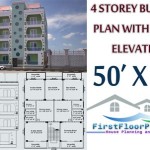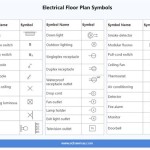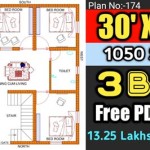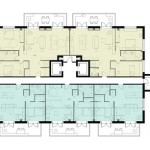Home Plans for Small Houses: Maximizing Space and Style
The demand for small house plans is steadily increasing as individuals and families embrace minimalist living, seek affordability, and prioritize environmental consciousness. Careful planning is essential to maximize functionality and comfort within a limited footprint. This article explores key considerations and popular design choices for small house plans.
Prioritizing Functionality in Small House Layouts
Effective space utilization is paramount in small house design. Open floor plans are frequently employed to create a sense of spaciousness by combining living, dining, and kitchen areas. Multi-functional furniture, such as sofa beds and expandable dining tables, can further enhance space efficiency. Built-in storage solutions, including under-stair drawers and window seats with compartments, help minimize clutter and maintain a clean aesthetic.
Embracing Minimalism in Design
Minimalist design principles align seamlessly with small house living. Clean lines, simple color palettes, and a focus on essential furnishings create a sense of calm and order. Large windows maximize natural light, further enhancing the perception of spaciousness. Strategic placement of mirrors can also create an illusion of depth and amplify light.
Cost-Effective Construction Techniques
Building a small house often comes with inherent cost advantages compared to larger homes. Utilizing cost-effective materials like prefabricated panels or shipping containers can further reduce expenses. Simple rooflines and rectangular footprints minimize construction complexity and labor costs. Energy-efficient features, such as proper insulation and high-performance windows, contribute to long-term savings on utility bills.
Maximizing Natural Light and Ventilation
Ample natural light and ventilation contribute significantly to the comfort and well-being of occupants in small spaces. Large windows, skylights, and strategically placed openings optimize airflow and minimize the need for artificial lighting and climate control. Clerestory windows, positioned high on walls, allow sunlight to penetrate deep into the interior while maintaining privacy.
Choosing the Right Small House Plan
Selecting the right small house plan involves careful consideration of lifestyle needs and preferences. Tiny houses, typically under 400 square feet, offer extreme minimalism and portability. Small cottages, ranging from 400 to 1000 square feet, provide more living space while retaining a cozy feel. Bungalows, often featuring a single-story layout, are ideal for accessibility and ease of maintenance.
Incorporating Outdoor Living Spaces
Extending living space outdoors can significantly enhance the functionality of a small house. Decks, patios, and balconies provide areas for dining, relaxation, and entertaining. Vertical gardens and rooftop terraces maximize limited outdoor space while adding greenery and visual appeal. Careful landscaping can create a seamless transition between indoor and outdoor areas.
Creative Storage Solutions for Small Homes
Innovative storage solutions are crucial for maintaining an organized and clutter-free environment in a small house. Utilizing vertical space with tall shelving units and wall-mounted cabinets maximizes storage capacity. Under-bed storage drawers and ottomans with hidden compartments offer discreet storage options. Multi-purpose furniture, such as beds with built-in drawers and coffee tables with lift-top storage, further enhances functionality.
Considering Future Flexibility
Designing a small house with future flexibility in mind is essential for accommodating changing needs. Flexible floor plans that can be easily reconfigured allow for adaptation to evolving lifestyles. Multi-purpose rooms that can serve as guest rooms, home offices, or hobby spaces provide versatility. Consider incorporating features that can be easily modified or expanded, such as unfinished basements or attics.
Exploring Sustainable Design Options
Sustainable design principles are increasingly important in small house construction. Utilizing eco-friendly materials, such as reclaimed wood and recycled insulation, minimizes environmental impact. Passive solar design strategies, including south-facing windows and thermal mass, reduce reliance on heating and cooling systems. Rainwater harvesting systems and composting toilets further contribute to sustainable living.

Small House Plans Economical Floor

These Small House Plans Pack A Lot Of Punch Houseplans Blog Com

10 Small House Plans With Open Floor Blog Homeplans Com

10 Small House Plans With Open Floor Blog Homeplans Com

Small House Plans With Pictures Houseplans Blog Com

Small House Plans Simple Floor Cool

27 Adorable Free Tiny House Floor Plans Craft Mart

27 Adorable Free Tiny House Floor Plans Small

Tiny House Floor Plans 32 Home On Wheels Design
Small Homes Top 5 Floor Plans Designs For Houses Architecture Design








